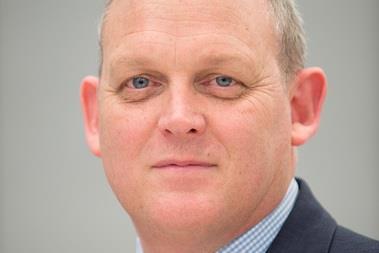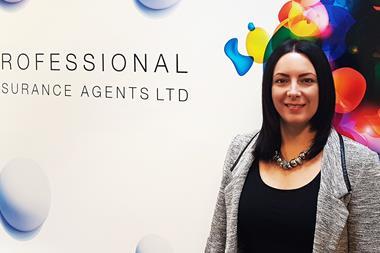Insurance Times lead researcher Savan Shah discusses broker concerns emerging from the Insurance Times Broker Service Survey, MGA growth and the challenges that lie ahead in 2018 with Towergate’s Chief Underwriting Officer Andy Baughan.

Could you tell our readers a bit about yourself and some of the challenges you have been faced with since joining Towergate?
I am the chief underwriting officer for Towergate, having been involved in underwriting and pricing for over 30 years with a range of insurers including Zurich, Royal Sun Alliance, Tesco Underwriting and Churchill Insurance.
The biggest challenge for us right now is the soft market, both in commercial lines and personal lines. It’s very hard to push the required rate, which puts underwriting results under pressure. What is key, certainly for us here at Towergate and I am sure many of our peers, is that we have positive profitable results that are sustainable – but the market has not been helping with that over the last 12-24 months. The Ogden change back in March didn’t help, by putting further pressure on underwriting results. And now the Government has reassessed the situation so the Ogden rate will be changing again, creating uncertainty in the market.
In this year’s Insurance Times Broker Service Survey, Underwriting Expertise & Flexibility is a great concern for many brokers. Why do you think this is and how do you ensure this important service is at a high standard at Towergate?
I work in the MGA, i.e. the underwriting division, so I’ll address this question from an underwriting perspective. Underwriting is at the heart of any MGA, and at the heart of everything we do. We maintain our underwriting discipline and we aim to make profitable returns for our carriers/insurer partners – but of course it’s also about providing good customer service and good claims service.
David Ross (Ardonagh group chief executive) recently said he is keen on cross selling. Does this present any specific data challenges for Towergate, with GDPR on the way?
Towergate is now part of the Ardonagh group. Making the most of that and exploiting possible synergies and opportunities created by different companies that work in the group is at the top of the Ardonagh Group’s priorities list.
The Ogden rate was another area of concern for brokers in this year’s Insurance Times Broker Service Survey. Ministry of Justice Spokesmen Lord Keen has set early 2018 as a target date for the new Ogden rate legislation to be put in place, but many think this may be an optimistic target. What are your thoughts?
I’d agree that Q1 next year feels unrealistic – we share the view that it will be towards the back end of next year, Q3 possibly.
Are you seeing a shift in who is providing capacity to MGAs, and are traditional ‘household name’ insurers diminishing in this area in favour of reinsurers and new entrants?
MGAs are looking at more non-traditional capacity, but I wouldn’t say that this means traditional capacity wouldn’t play a part in the MGA space. It comes back to the key question - what does an MGA give to a capacity provider that they cannot provide for themselves? There is room for both to play and I think they will, but I would agree more non-traditional players are participating.
We are seeing an increasing number of MGAs, more competition, insurer input and increasing commoditisation of personal lines, SME and commercial. How do you see the role of the MGA evolving as the market changes?
I think that’s spot on - there are many more MGAs being set up, literally by the day. I think the interesting question for anybody setting up an MGA or getting involved in an MGA is why are they doing it? What is the purpose of the MGA, and what is different about an MGA compared to an insurer writing business themselves? My own view is that successful MGAs tend to be niche underwriters.
Are there any developments in 2018 that you feel will further enhance the service provided to brokers?
E-trading is going to grow, particularly for SME business, and there will undoubtedly be a drive towards technical innovation - things like telematics and the growth of smart homes insurance. There are so many innovations coming down the track that will impact the market generally.
How can the insurance industry fix its poor public image?
I have a one-word answer for that and that word is delivery!
The only way you can change the image is to be better and to demonstrate that you are better.
The best example I can give you, although it was 2 years ago, is very pertinent to the question. The time when the public image of insurance really hits home is during natural catastrophe events. The floods of 2015/16 marked a real turning point for the industry’s reputation – prior to that insurers generally were at a pretty low point in terms of what people thought of them.
Insurers were very well prepared, and they were working closely with the government to ensure customers got the best response and the best advice.
It really is a question of activity and actions speaking for themselves. Everybody had a presence on the ground, with their customers.
A lot of the criticism directed at insurers tends to be around delayed response, and the perception that claims aren’t paid. During that period of flooding there was a massive and successful effort to respond quickly and settle claims quickly. The whole industry is moving away from deciding what it’s going to give customers and then giving it to them, towards providing what the customer is actually asking for and needs.
During the flooding, the real proof that insurers were getting better was that there was minimal negative noise from customers and the media – that’s the real evidence of improvement.







































No comments yet